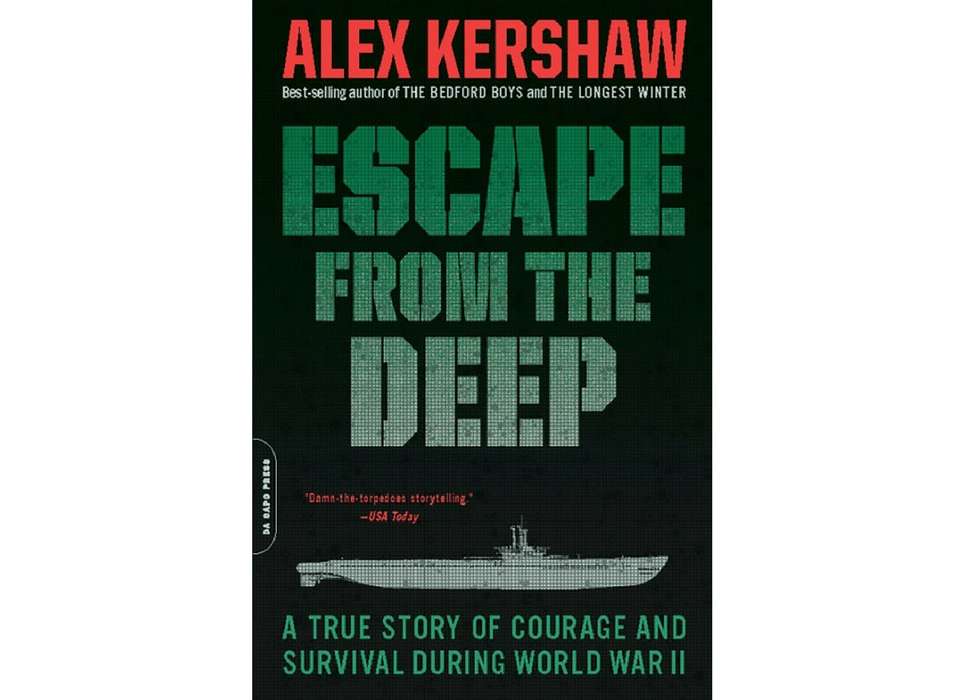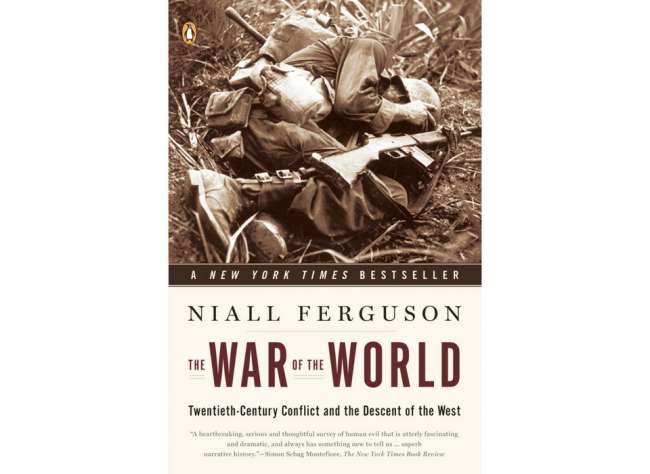“DaSilva felt his way through the superstructure and then climbed through the hatch leading to the ocean. Immediately, the water pressure grabbed at him, forcing his body upward. He resisted the urge to let go of the line and surge to the surface. ‘I wrapped my feet around the rope,’ he remembered, ‘and slowly let myself up ten feet at a time, stopping to count to ten each time.’
“DaSilva was about a hundred feet from the surface, in pitch darkness, when he started to have problems breathing. He slowed his ascent.
“How slow should I go? thought DaSilva. Gotta stop every ten feet . . . or was it fifteen feet?
“Is the other man coming up in back of me?
“Tighten your grip with your feet, or you will turn upside down.
“Where the hell is that next knot?
“The waters were black and cold.
“Did I stop at that last knot?
“How long have I been coming up?
“He was rising too fast.
“Slow down and breathe deep.
“It was still dark. He was still far from the surface.
“Should be seeing light by now.
“Who’s already up there?
“Still the frigid darkness.
“Where the hell is the surface?
“Wish there was a rescue team waiting.
“Maybe the Japs are there.
“He found a knot.
“STOP! Now slow . . . Up . . . Up . . . Up . . .
“DaSilva realized he was able to breathe easier. The air in his lungs was equalizing with the external pressure.
“No more darkness. When he exhaled, he could see bubbles escape from his Momsen Lung and then shoot upward, like the fizz in a glass of champagne.
“DaSilva finally broke the surface.”
– Alex Kershaw, Escape from the Deep: A True Story of Courage and Survival During World War II, pages 126–127
What is memorable in this passage, written by historian Alex Kershaw based on his interviews with Jesse DaSilva, is the portrayal of what was going through a young sailor’s mind as he ascended 180 feet through the water to escape a sunken submarine.
Submariners were a unique and elite group of sailors during World War II. Their training and performance in an underwater environment naturally hostile to human beings, much less under combat, required a deep mental toughness. One of the strong mental aspects required included coming to terms with the fact that a direct hit by a depth charge or bomb on a submarine hundreds of feet below the ocean surface virtually always meant certain death for the entire crew—no survivors.
In my previous post from Escape from the Deep, I described the decision faced by Clay Decker and George Zofcin, two of Jesse DaSilva’s crewmates, to get in the escape chamber and attempt to rise to the surface using Momsen lungs to breathe. Unfortunately, George Zofcin was too paralyzed by the situation to make the attempt. Clay Decker in fact made the ascent to the surface, but the man who followed him ascended too fast. Upon breaking the surface, his body was assaulted by pressure imbalances and the bends took him back underneath the water. His desperate thrashing nearly took Decker back down with him.
Through Kershaw’s description of DaSilva’s passage, we get a glimpse of the mental concentration and struggle necessary to escape a watery grave. He resists the temptation to let go, to rise, slows himself in the darkness, gropes for the next knots in the line, remembers to keep his grip with his feet on the rope so that he will not become disoriented in the darkness and lose which way is up. Readers can sense his impatience, his discipline, and desire to see light again.
Sealed in the USS Tang’s forward torpedo room, nearly 40 men survived the sub’s sinking (after her own torpedo struck her). Thirteen managed to escape the submarine’s hull through the escape chamber into the black water 180 feet beneath the air. Jesse DaSilva became one of only five men to survive the ascent and be rescued on the surface.
However, one line of thought in the passage describing his ascent would prove prescient, and unfortunate: The Japanese were indeed patrolling, and the next morning they picked up nine survivors from the Tang (four had been washed from the bridge and conning tower when the torpedo struck). With five Japanese merchant vessels sunk and great loss of life from Tang’s devastating attack the night before, the Japanese were in no mood to show mercy to the American survivors. DaSilva and the others were now in for another ordeal—surviving the Japanese prison camps of Ofuna and Omori for the rest of the war.
Notes: This is the sixth post in a series exploring books about submarine warfare during World War II. Read Part One. Part Two. Part Three. Part Four. Part Five. Part Seven. In a parallel series of History Through the Viewfinder posts, Dr. Huxen is revisiting the making of the interactive exhibit Final Mission: USS Tang Submarine Experience. Read Part One of that series. Part Two. Part Three. Part Four. Part Five. Part Six. Part Seven.

“A place can evoke the history that occurred there, but through words our minds truly gain perspectives and understanding of what it was like to know, feel, experience, hope, fail, triumph, and live through events from which we ourselves were absent. The written word is our most intricate map to retrace and reconstruct what we think happened, and ultimately brings us back to ourselves.”
– Keith Huxen, PhD, Senior Director of Research and History, The National WWII Museum
Keith Huxen
Keith is the former Senior Director of Research and History in the Institute for the Study of War and Democracy at The National WWII Museum.
Cite this article:
MLA Citation:
APA Citation:
Chicago Style Citation:










![Max Fuchs, New York City cantor, sings as Rabbi Sydney [sic] Lefkowitz, Richmond, VA, conducts the first Jewish services from Germany.](/sites/default/files/styles/max_650x650/public/2025-10/image1.jpg)

